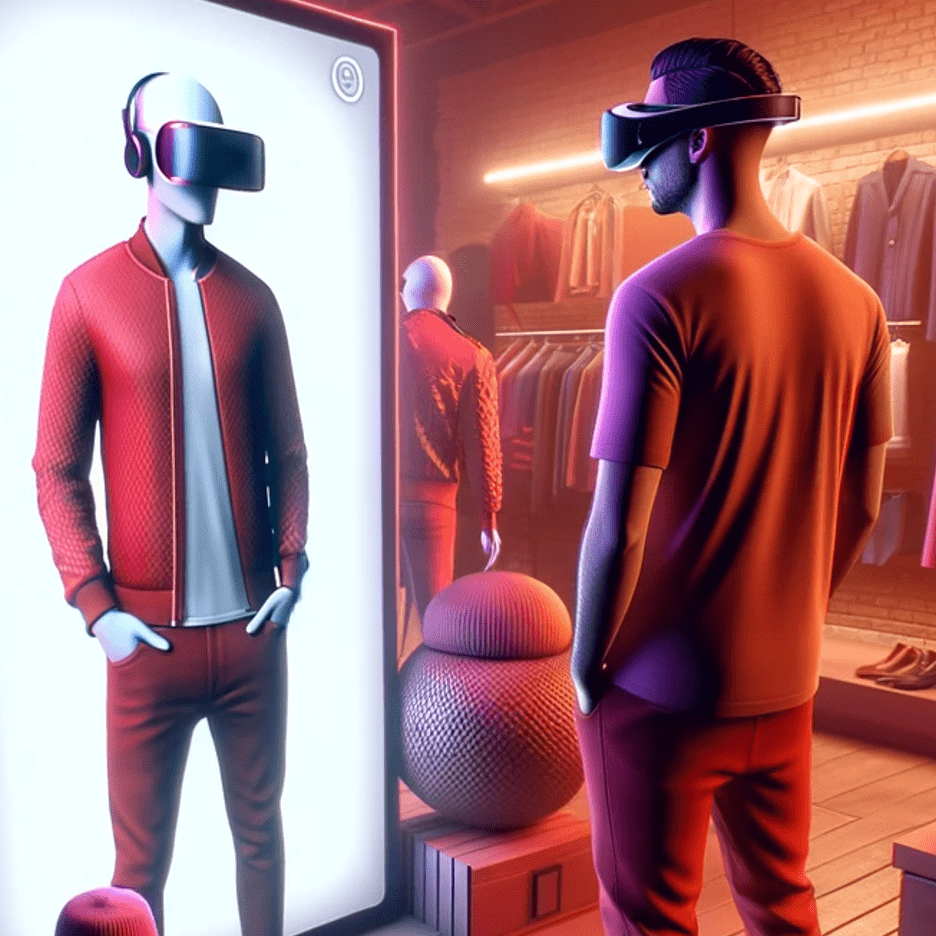
Will VR/AR Marketing Make a Comeback in 2024?
Apple entering the $32 billion market this month with the launch of Vision Pro may be a game-changer.
The realms of virtual and augmented reality (VR and AR) are undergoing a significant renaissance in the marketing world. This resurgence is largely propelled by the launch of Apple’s Vision Pro, a device that will very likely redefine the boundaries of digital engagement.
With the AR market valued at over $32 billion and projections indicating a leap to $50 billion by 2027, the stakes for marketers are higher than ever. This surge is underpinned by an expansive user base, with approximately 1.4 billion active AR devices globally, showcasing the pervasive reach and potential impact of AR technology in contemporary marketing strategies.
In the past, the journey of VR and AR through the marketing landscape has been marked by ebbs and flows. In 2021, a notable 35% of marketers had already woven VR and AR into their strategic fabric, eyeing further investment. Yet, by 2023, the landscape appeared to wane, with 27% considering a step back from these technologies.
However, 2024 heralds a paradigm shift, with a mere 13% looking to reduce their investment, while an overwhelming 84% are either maintaining or amplifying their budgetary commitments. This pivot is not merely a trend but a testament to the growing recognition of VR and AR as becoming an indispensable tool in the marketer’s arsenal.
Overcoming Challenges to Adoption
Historically, the adoption of VR and AR in marketing has been hamstrung by significant barriers, including the prohibitive costs of technology and the unwieldy nature of early equipment.
That is beginning to change thanks to the evolution of technology that has rendered VR glasses and AR apps more accessible than ever before. The infusion of innovation by Apple, Samsung, and Google has catalyzed this transformation, making VR and AR more than just feasible—they’re becoming desirable and effective marketing instruments.
However, the journey ahead is not without challenges. The high initial cost and complexity of creating compelling VR and AR content may slow adoption among consumers and smaller businesses. Moreover, as the technology evolves, so too must the strategies marketers employ, requiring ongoing education and adaptation to harness these tools effectively.
Apple’s Vision Pro has stirred the XR market with its advanced features and high price point, creating concern within Google and causing a partnership with Samsung to face delays and challenges. This collaboration aims to produce a competing XR headset, but bureaucratic hurdles and strategic reassessments have postponed its production. Samsung’s device, expected to be more affordable than Apple’s, encounters its own hurdles, including market readiness and ecosystem development.
Apple’s approach targets a niche audience initially, focusing on developers and organizations, while Google and Samsung work to balance innovation with accessibility. The competition highlights the complexities of introducing cutting-edge technology in a market that is still exploring the practical applications and benefits of XR experiences.
Apple’s Vision Pro and Its Impact on Marketing
Despite the high price point and other inhibitors, the introduction of Apple’s Vision Pro is set to be a watershed moment for VR and AR in marketing. With its unparalleled high-fidelity visuals and intuitive integration with existing digital marketing tools, the Vision Pro is equipped to launch marketing into a new era of engagement. This device isn’t just about showcasing products; it’s about creating immersive experiences that envelop consumers in the brand narrative.
Devices from Samsung, Google, and other tech giants will also enrich the ecosystem, each contributing unique features that enhance accessibility and open new avenues for creative marketing.
Real-World Applications in Marketing
The application of VR and AR in marketing is not a distant future—it’s happening now. Even as consumer purchasing of VR/AR hardware will may face initial hurdles, there are many applications for marketing that exist today. From VR showrooms that offer an immersive browsing experience to AR filters that bring social media ads to life, these technologies are reshaping consumer engagement.
Notably, AR-based shopping experiences have been shown to encourage nearly half of all consumers to spend more, a statistic that speaks volumes about the potential of AR to elevate marketing strategies and drive revenue growth.
The impact of AI or VR/AR
The impact of AI on AR/VR technologies is poised to significantly enhance the user experience and expand the capabilities of these immersive platforms. AI can drive more personalized and interactive AR/VR experiences by analyzing user behavior, preferences, and interactions to customize content in real-time. This could lead to AR/VR environments that adapt on the fly, offering tailored recommendations, altering narratives, or modifying difficulty levels in games and simulations to suit the individual user.
Furthermore, AI can improve the realism and responsiveness of virtual worlds, making virtual assistants within these environments more intuitive and capable of understanding and reacting to user commands and queries in a natural, human-like manner.
Additionally, AI-powered computer vision algorithms are crucial for advancing AR/VR technologies, enabling more accurate and seamless integration of digital objects into the real world in the case of AR, and more immersive and believable environments in VR.
For instance, AI can enhance object recognition, spatial mapping, and gesture recognition, allowing for more fluid and interactive AR/VR experiences. As these technologies continue to evolve, the convergence of AI with AR/VR holds the promise of creating more engaging, efficient, and personalized experiences, fundamentally changing how we interact with digital content.
Emerging Trends and Future Possibilities
As we peer into the future, the trajectory of VR and AR in marketing is set to be influenced by emerging trends such as personalized experiences and immersive storytelling. The integration of mixed reality and AI into these platforms will further refine and enhance the capabilities of VR and AR, offering marketers unprecedented opportunities to captivate and engage their audiences in meaningful ways.
For marketers eager to harness the power of VR and AR, the path forward involves strategic planning and a keen understanding of technological advancements. Embracing these technologies requires a thoughtful analysis of budget, audience, and creative content to ensure that VR and AR initiatives resonate with consumers and drive tangible results.
As we navigate through 2024, the resurgence of VR and AR in marketing represents a pivotal moment in the evolution of digital engagement. With the support of compelling statistics and the imminent release of groundbreaking devices like Apple’s Vision Pro, the potential of VR and AR to revolutionize marketing strategies and create more engaging, immersive consumer experiences is becoming increasingly clear. These technologies offer unprecedented opportunities to engage and enchant consumers, promising a future where digital and physical realities blend seamlessly to enhance the consumer experience.



